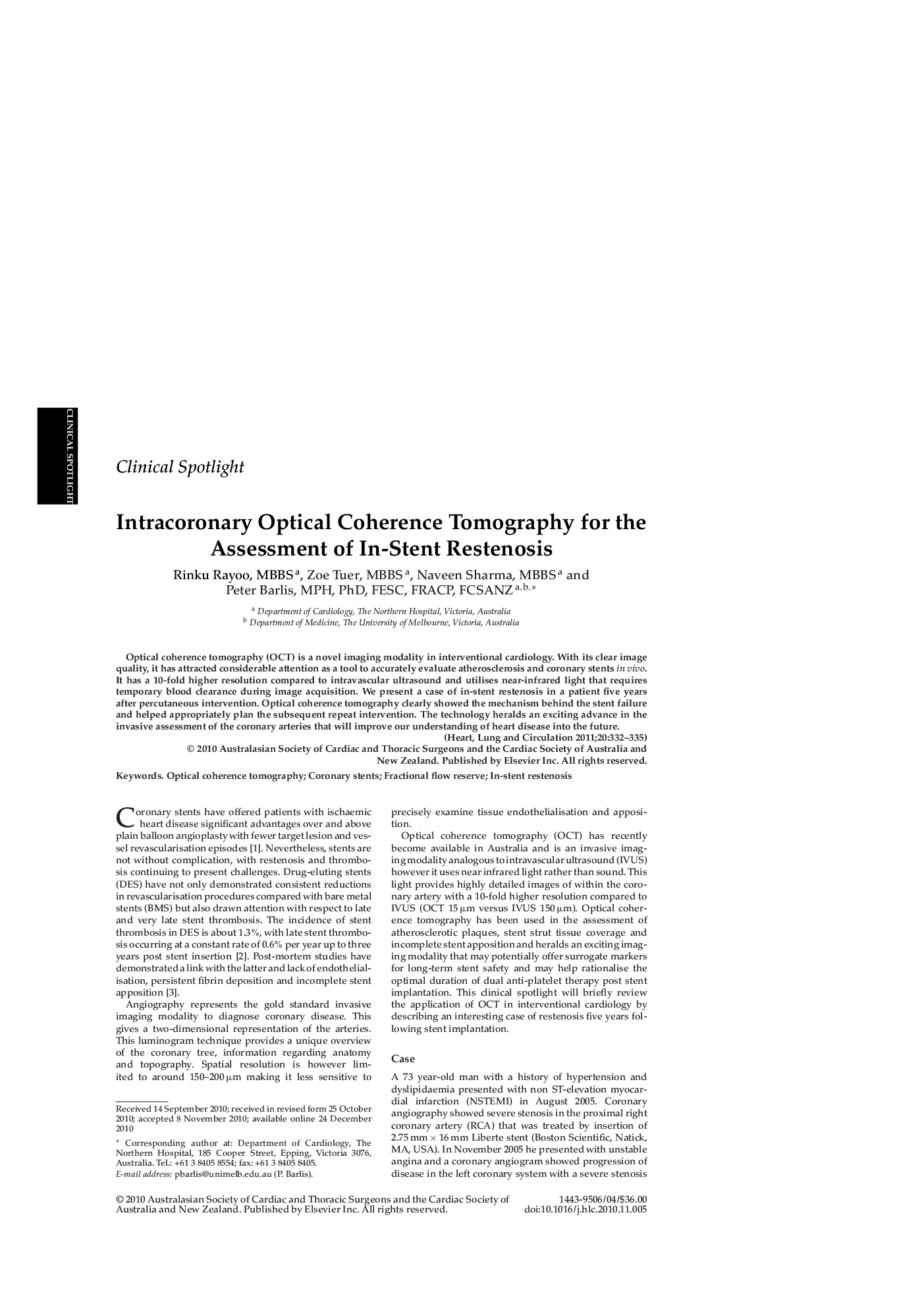| Article ID | Journal | Published Year | Pages | File Type |
|---|---|---|---|---|
| 2918939 | Heart, Lung and Circulation | 2011 | 4 Pages |
Optical coherence tomography (OCT) is a novel imaging modality in interventional cardiology. With its clear image quality, it has attracted considerable attention as a tool to accurately evaluate atherosclerosis and coronary stents in vivo. It has a 10-fold higher resolution compared to intravascular ultrasound and utilises near-infrared light that requires temporary blood clearance during image acquisition. We present a case of in-stent restenosis in a patient five years after percutaneous intervention. Optical coherence tomography clearly showed the mechanism behind the stent failure and helped appropriately plan the subsequent repeat intervention. The technology heralds an exciting advance in the invasive assessment of the coronary arteries that will improve our understanding of heart disease into the future.
